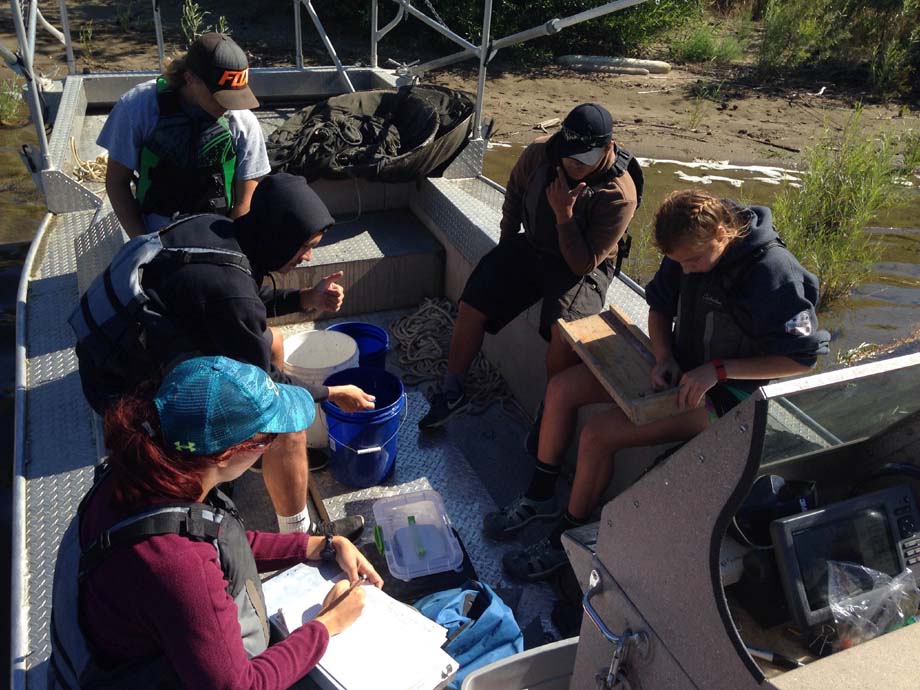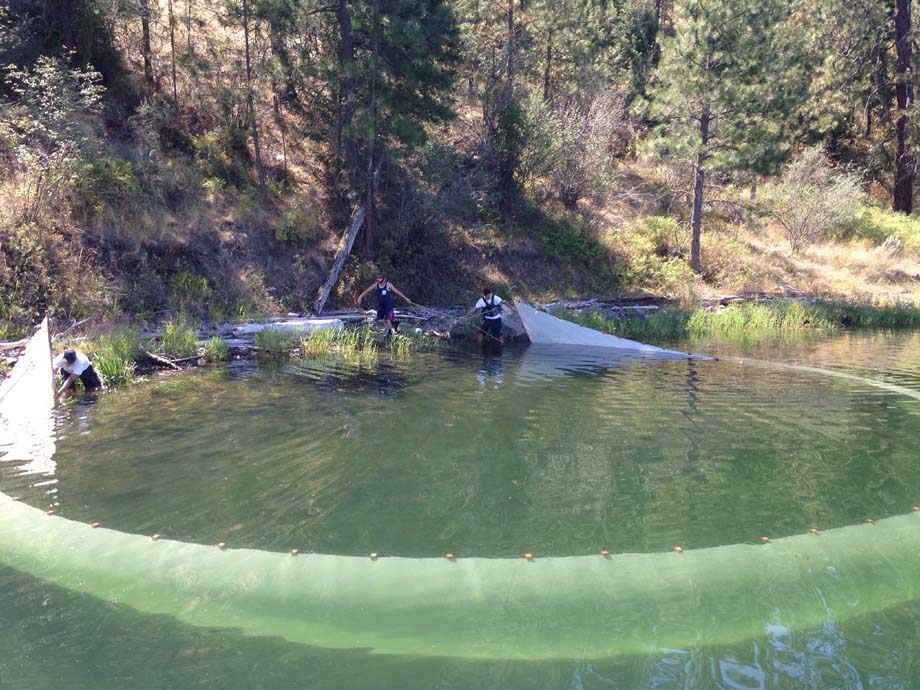The Spokane Tribe are salmon people. Since time immemorial they relied on the bountiful runs of salmon and steelhead that thrived in the Spokane and Columbia Rivers as their primary form of sustenance. A combination of factors led to the extirpation of local salmon populations in the late 19th and early 20th centuries; repressing the tribe’s life-style and culture. Over-harvest in the lower Columbia, driven by the canning industry, took a significant toll on upriver stocks. Construction of hydroelectric dams on the Spokane River in the early 1900’s barred salmon from most of the Spokane River, as none of the dams are equipped with fish passage facilities. The lower 29 miles of the Spokane River still supported salmon until approximately 1940, when Grand Coulee Dam blocked salmon and steelhead from reaching the upstream-most 1,100 miles of the Columbia River and its tributaries. Since their departure, the Spokane Tribe has sought the return of salmon…
The Spokane Tribal Fisheries Anadromous Program is tasked with returning anadromous species to the waters of the Spokane Tribe. The Program works with regional partners in completing projects that follow the Northwest Power and Conservation Council’s Phased Approach to Reintroduction outlined in the 2014 draft of the Columbia River Basin Fish and Wildlife Program and the Columbia Basin Tribes & First Nations 2015 joint paper, Fish Passage & Reintroduction into the U.S. & Canadian Upper Columbia Basin.
The Anadromous Program has participated in or led several research projects that will be essential to informing the feasibility of reintroducing salmon and steelhead to the blocked area upstream of Chief Joseph and Grand Coulee dams. Beginning with a Reintroduction Risk and Donor Stock Assessment, this project identifies which anadromous species, and their sources, are most appropriate for the region as well as identifying the ecological, genetic, and pathogenic risks associated with their reintroduction. Multiple habitat assessments have performed for smaller tributaries as well as larger bodies of water such as the mainstem Spokane River and Lake Roosevelt. Productivity information derived from these habitat assessments are used to populate a Life-Cycle Model that evaluates how well reintroduced species are able to thrive in the Blocked Area as well as help establish goals for conservation, harvest, and artificial production. Ultimately the Program will work with regional partners and synthesize all relevant works into a Phase 1 Report that will be crucial inform the region as to the feasibility of reintroduction.
In addition to reintroduction research projects, the Program is developing and reviewing policies to further reintroduction through processes underway in the Columbia Basin. These processes include but are not limited to the Columbia River System Operations Environmental Impact Statement/National Environmental Policy Act, the Columbia River Treaty Renegotiation, the National Oceanic and Atmospheric Administration’s Columbia Basin Partnership Taskforce, and in other federal, state, and local arenas.
The Spokane Tribal Fisheries Anadromous Program is tasked with returning anadromous species to the waters of the Spokane Tribe. Collaboratively and independently, the Anadromous Program is forwarding reintroduction of salmon and steelhead through both research and policy. Research follows guidance described by Columbia Basin Tribes & First Nations (2015) and the Northwest Power and Conservation Council’s 2014 Columbia River Basin Fish & Wildlife Program. Multiple habitat assessments have been led by the Anadromous Program, identifying and quantifying tributary habitats as well as characterizing their current condition and ability to support spring and summer/fall Chinook, and steelhead. We’ve also participated in projects led by our partners, including a reintroduction risk and donor stock assessment, life cycle modeling, and additional habitat assessments.


